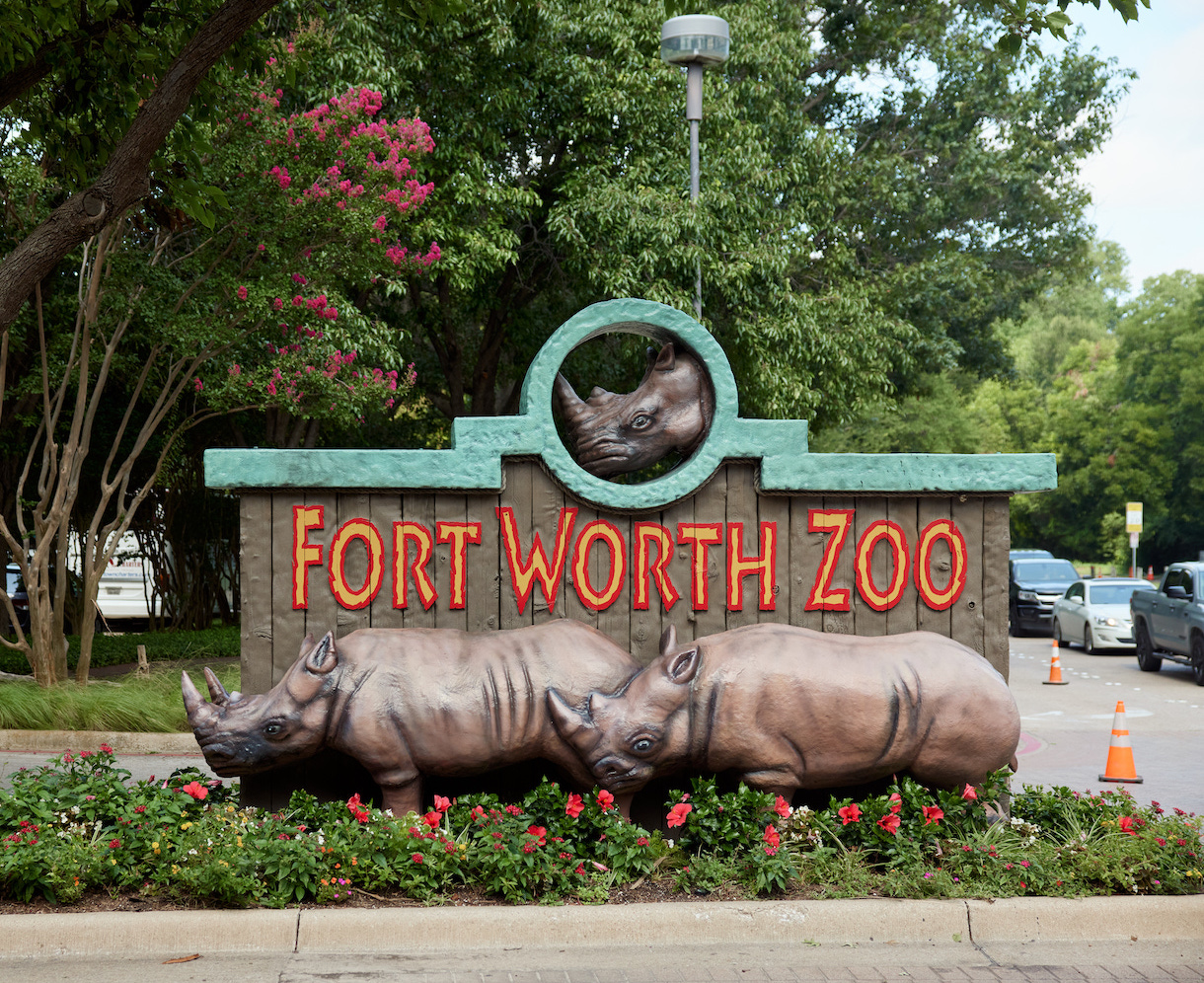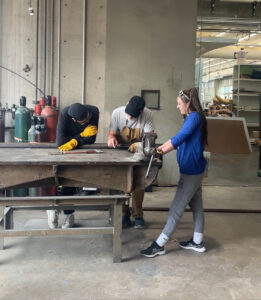
Students will present their projects at the Fort Worth Zoo on Wednesday, May 8 from 2:15-3:45 p.m.
Art and ecology unfold in a zoo enrichment course led by School of Art Professor Cameron Schoepp and Victoria Bennett, an associate professor in the College of Science & Engineering.
In this collaborative initiative, students form teams to design and build structures aimed at actively enriching the quality of life for the animals residing at the Fort Worth Zoo.

Schoepp and Bennett discuss the project with their students.
During a series of zoo visits, each team selects an animal for an in-depth ecological study. The primary goal is to grasp the natural stimuli these animals encounter, serving as inspiration for their subsequent projects.
Created by Bennett and Schoepp nine years ago, the course has been consistently offered since its inception. Actively seeking both graduate and undergraduate participants, they invite students to engage in this innovative exploration situated at the crossroads of art, ecology, and for the first time this year, engineering.
Students will present their objects at the Fort Worth Zoo on Wednesday, May 8 from 2:15-3:45 p.m. All are welcome to attend the unveiling, and the objects will remain on exhibit for public viewing, along with enrichment projects from previous classes.
Group 1
Rani Hirsch, Emma Kovalsky and Emile Zabaneh are designing automated feeders for the American black bear, the smallest and most widely distributed bear in North America. The feeders aim to simulate a more natural feeding pattern by distributing food randomly throughout the day, encouraging bears to move around and explore, mimicking their behavior in the wild.

Schoepp assisting students with their project.
Group 2
Ellie Evans, Harmann Chhabra and Abi Welch are developing an artificial tree for Asian elephants, as a significant portion of their diet involves browsing — foraging for shrubs and trees. The artificial tree will feature a large overhead arm with hanging branches, designed to promote the natural plucking and pulling action elephants undertake with their trunks to browse
Group 3
Marcy Davis, Payton Harper and Kaitlyn Koltz are creating a montane forest tree-inspired structure for the black and white colobus monkey. As strictly arboreal primates, such a structure will encourage natural movement and offer the shelter they seek in their natural African environment.
Group 4
Matthew Froelich, Madison Hall and Justyn Wallace are designing a tic-tac-toe-inspired rock structure for North American river otters to simulate the natural rock turning behaviors that they exhibit when foraging for invertebrate prey both on land and in aquatic habitats.
